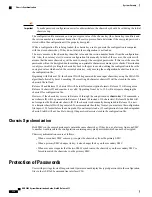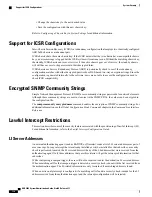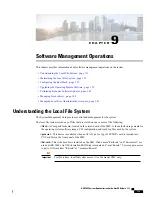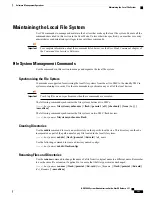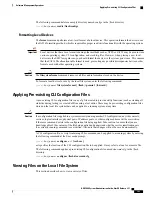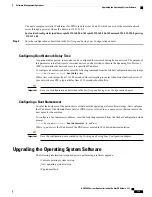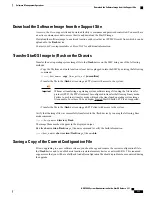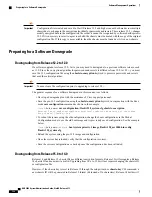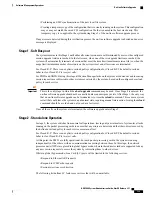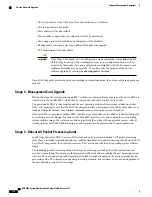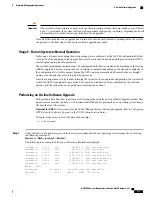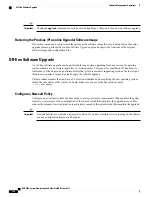
If an invalid file is found, the system displays a failure message similar to these:
Failure: Image /flash/
image_version
.bin CRC check failed!
Failure: /flash/
image_version
.bin, has a bad magic number
Configuring the Boot Stack
The boot stack consists of a prioritized listing of operating system software image-to-CLI configuration file
associations. These associations determine the software image and configuration file that gets loaded during
system startup or upon a reload/reboot. Though multiple associations can be configured, the system uses the
association with the highest priority. In the event that there is an error processing this association (for example,
one of the files cannot be located), the system attempts to use the association with the next highest priority.
Priorities range from 1 to 100, with 1 being the highest priority. The maximum number of boot stack entries
that may be configured in the boot.sys file is 10.
Boot stack information is contained in the boot.sys file, described in
Understanding the boot.sys File, on page
120
In addition to boot stack entries, the boot.sys file contains any configuration commands required to define
the system boot method as explained in the section that follows.
System Boot Methods
The local-boot method uses software image and configuration files stored locally on the system. Upon system
startup or reboot, the system looks on one of its local devices or
/hd-raid
located on the active SMC for the
specific software image and accompanying configuration text file. When using the local-booting method, you
only need to configure boot stack parameters.
The system can also be configured to obtain its software image from a specific external network server while
it is paired with a configuration text file that resides on the system. When using network booting, you need
to configure the following:
•
Boot stack parameters, which define the files to use and in what priority to use them
•
Boot interface and network parameters defining the SPIO management LAN interface and the methods
to use to reach the external network server
•
Network booting delay time and optional name server parameters defining the delay period (in seconds)
to allow for network communications to be established, and the IP address of any Domain Name Service
(DNS) name server that may be used
Detailed information on how to configure the system to use the network booting method appears in
Booting Configuration Requirements, on page 127
Viewing the Current Boot Stack
To view the boot stack entries contained in the boot.sys file run the Exec mode
show boot
command.
Operator and inspector-level users can execute the
show boot
command.
Important
ASR 5000 System Administration Guide, StarOS Release 21.1
125
Software Management Operations
Configuring the Boot Stack
Summary of Contents for ASR 5000
Page 26: ...ASR 5000 System Administration Guide StarOS Release 21 1 xxvi Contents ...
Page 316: ...ASR 5000 System Administration Guide StarOS Release 21 1 288 VLANs VLAN Related CLI Commands ...
Page 400: ...ASR 5000 System Administration Guide StarOS Release 21 1 372 Engineering Rules ECMP Groups ...


